Our fourth week is complete and our time banding owls at the Straits is now halfway over! This was the largest week in terms of numbers with 107 owls caught, with a season total of 197, and we thus passed 100 owls captured for the season and are nearing 200. This week started out very strong with 88 birds captured just during the nights of October 6th, 7th and 8th. These three nights alone nearly matched the 90 birds caught during the entire first three weeks. The 8th was particularly exciting, as we found two barred owls (BDOW) in our nets across back-to-back net checks, with a third flying overhead the same night. Activity slowed down to a trickle of 3 to 6 birds per night the rest of the week, unfortunately, likely due to milder weather and southerly winds on some days holding birds back.
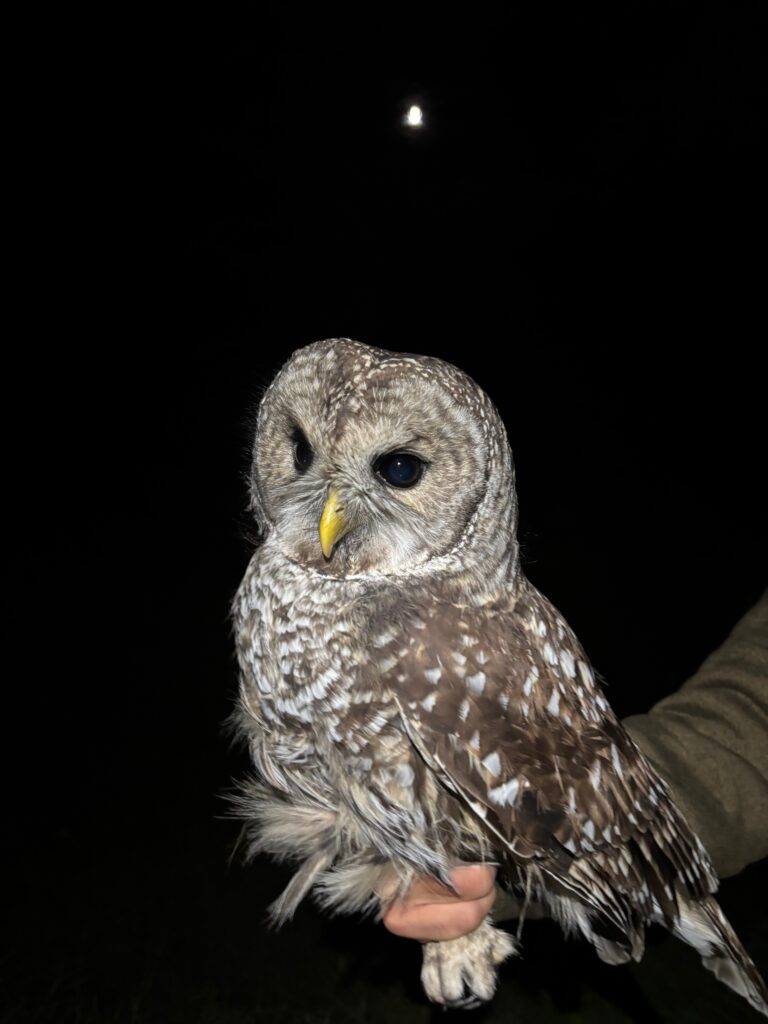
For northern saw-whet owls (NSWOs) that could be reliably sexed, we have 37 males to 130 females. A frequent topic of discussion with our many visitors this week was why our sex ratio has become so heavily biased towards females. The audio caller we use to lure the owls to our mist nets plays the repetitive tooting call of a male NSWO, which greatly catches the interest of females more than males. Research suggests that this particular male call is more effective in attracting these birds for mist netting. Twenty-seven NSWOs have been categorized as unknown. It would be interesting to see how much the sex ratio would change if these birds could be accurately sexed.
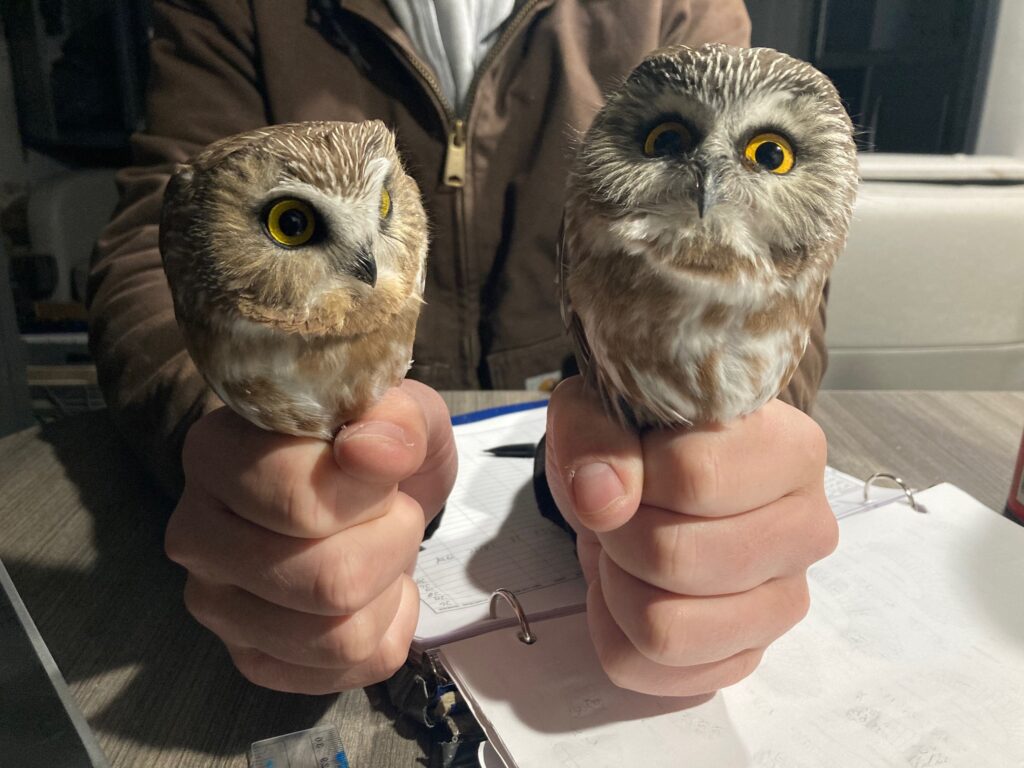
This week we will shift gears to discussing how to age NSWOs. These birds contain a chemical compound call porphyrin in their feathers that glows pink when under a blacklight or UV light. The porphyrin degrades over time as the feathers age and become worn out, exposed to daylight and the elements. The older feathers will lose their pink glow over time, while newer feathers that grow in as the bird molts will contain new porphyrin and glow pink again. Researchers can thus determine the age of NSWOs by examining their molt patterns under a UV light.
NSWOs are commonly classified into three age classes: hatch year (HY), second year (SY), and after second year (ASY). HY birds are born during the current calendar year and are the simplest to identify. Their feathers have all recently grown in and thus will all glow pink under UV light.
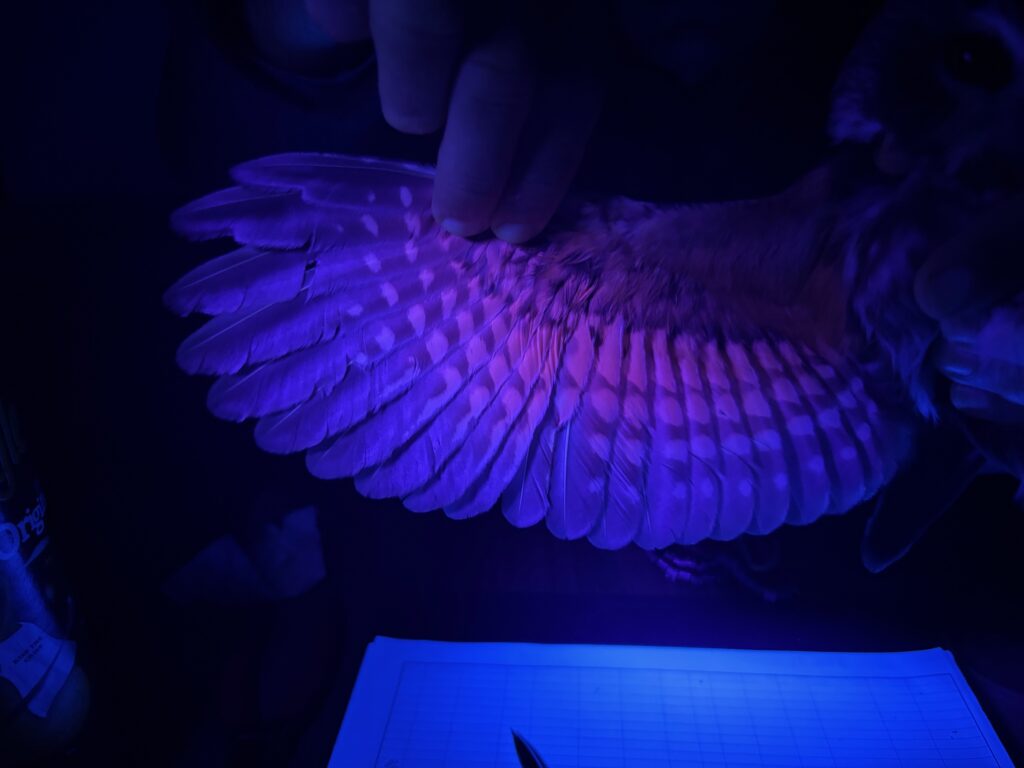
SY birds are in their second year of life and molt their outer and inner flight feathers first. These feathers will glow pink, while the older feathers in the middle remain.
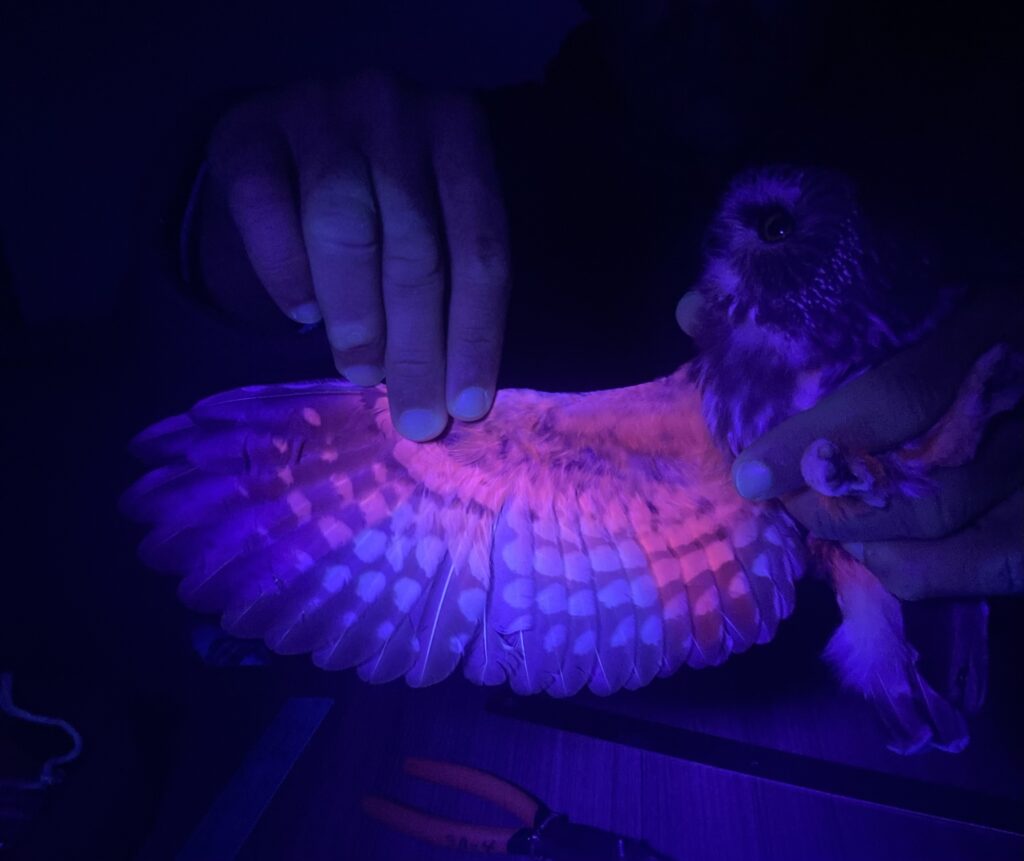
ASY birds are older than two years and don’t follow any particular pattern and so a mix of both old and new feathers can be observed along the wing. Assigning these owls to more specific age classes (third year, fourth year, etc.) becomes tricky, so ASY is used to categorize birds that are at least in their third calendar year of life or older.
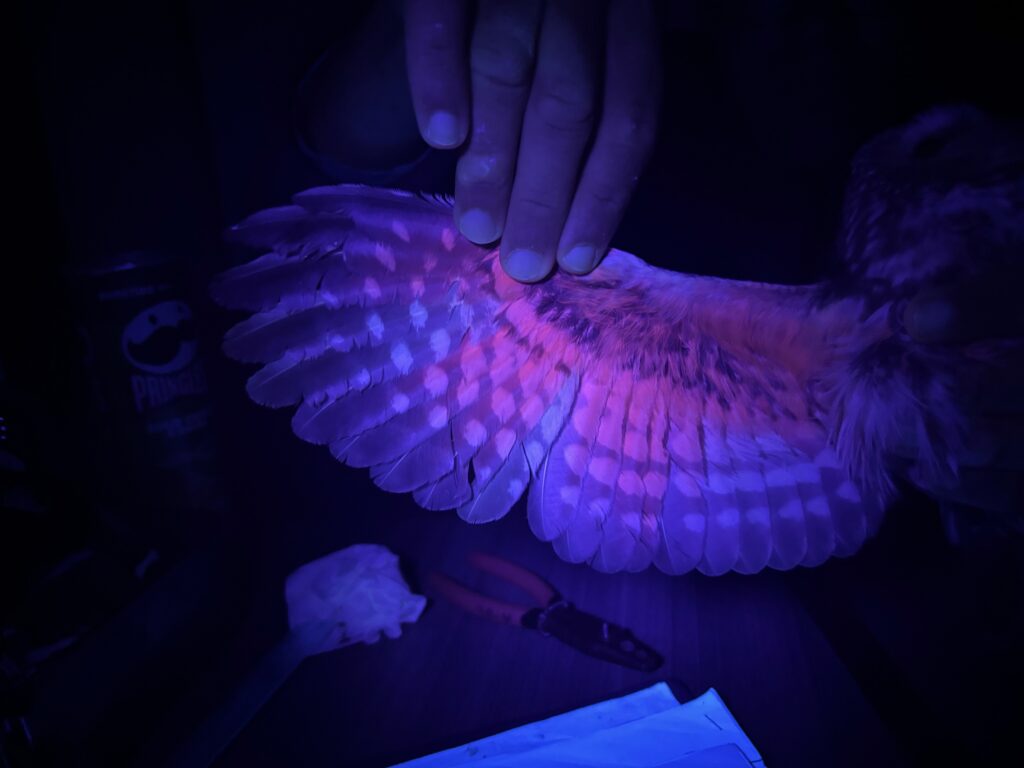
Aging and sexing are often the most important data collected during any kind of bird banding project. They provide an idea as to how well different age and sex classes in the population are doing. Datasets containing these demographic parameters often form the baseline of many important conservation and management decisions.
Season Numbers:
Total: 197, NSWO: 194, BDOW: 3
Jake and Josiah
